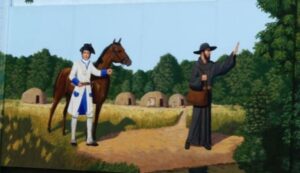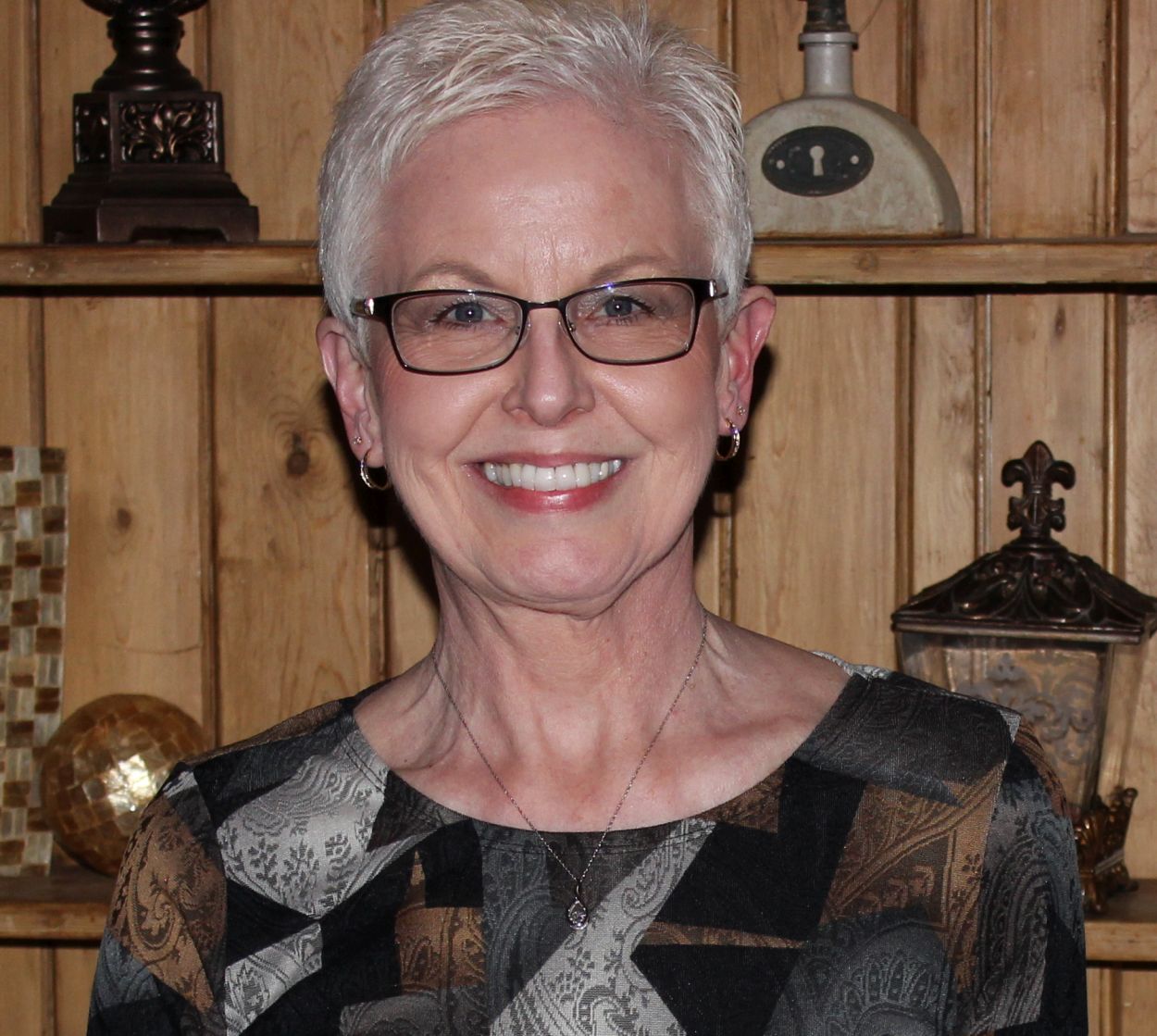This part of west central Ohio has a rich history that goes back well over 250 years. To memorialize some of our local history, some area towns have beautiful hand painted historical murals on their buildings.
I will showcase some of these murals in upcoming blog posts, taking you on an historical tour of our area.
The first mural is Rockford’s Bicentennial Mural.

Rockford, Ohio’s Historic Bicentennial Mural
Rockford is the oldest village in Mercer County, established in 1820. Anthony Shane was awarded several hundred acres of land on both sides of the St. Marys River in 1815 and had a trading post at what was the second crossing of the St. Marys River, called Shane’s Crossing. Shane platted Shanesville in June 1820, the first platted town in Mercer County and the original county seat. Its name was changed to Shanes Crossing in 1866 and to Rockford in 1890.
Rockford’s Historic Bicentennial Mural is located on the south side of Rockford’s Fire Station and is visible when driving north through Rockford on U.S. 33.
Rockford’s mural is actually a series of several panels painted by Dan Keyes. Keyes has also painted murals in Fort Recovery and St. Marys.

Rockford’s Bicentennial Mural, painted by artist Dan Keyes
The information for Rockford’s Bicentennial Mural was researched by Harrison Frech. Frech has extensively researched this area and its early pioneers and has an outstanding knowledge of the area. He is a popular speaker and I encourage you to attend one of his talks if you have the opportunity.
A placard near Rockford’s mural gives a brief history of each of the historical figures and events painted on the murals. The following is the information from the placard.

Placard explaining Rockford’s Historic Bicentennial Mural
1747-1828
People of Historical Significance Who Crossed the St. Marys River in Our Area, Research by Harrison Frech.

No. 1-3, Rockford Bicentennial Mural
No. 1: Captain Celeron De Bienville. The earliest known record of Europeans in Rockford was in 1749, where Bienville led an expedition through the upper Ohio Valley.
No. 2: Mahican Village. 1782, a group of Moravian apostate Mahicans established a small village directly across the St. Marys from present day Rockford where they converted hundreds of Indians to their faith.
No. 3: Father Joseph Pierre De Bonnecamp. Was part of the group led by Captain Celeron De Bienville in 1749 and helped reinforce relations with the tribes of the area, drive out English settlers, and plant lead plates marking French claim to the Valley.

No. 4, Rockford Bicentennial Mural
No. 4: Area Tribesmen. Along the St. Marys between Mendon and Rockford, archaeologists have located 2 pre-historic enclosures and two burial sites, showing presence of tribes people.

No. 5-6, Rockford Bicentennial Mural
No. 5: Fort Adams. General Anthony Wayne built Fort Randolph on the south side of St. Mary River to protect their supply line, which was soon renamed to Fort Adams in honor of Vice President John Adams.
Fort Adams was abandoned in the summer of 1796 after General Wayne’s army defeated the Miami Confederacy at the Battle of Fallen Timbers.
No. 6: General Anthony Wayne. General “Mad” Anthony Wayne brought an army north to fight the Miami Confederacy in 1794. He was almost killed when a tree fell on his tent during construction of Fort Adams, which caused suspicion of a possible assassination attempt by the army’s second in command, General James Wilkinson.

No. 7-10, Rockford Bicentennial Mural
No. 7: Anthony Shane, Founder of Rockford, OH. Antoine Chene, later known as Anthony Shane, was a French Canadian and Indian who led a very colorful life. His land grant, Indian reservation, and other dealings influenced the settling of the entire Northwest area of Ohio. Anthony Shane spoke five languages and was a hunter in Fort Defiance and an interpreter for the Fort Wayne Indian Agency. He later served as a messenger and advisor to General Henry Hull at Detroit during the War of 1812. Anthony Shane was influential and liked by both the whites and the local Indians.
No. 8: Auqualanaux Shane. Anthony Shane’s wife, Lamateshe, also known as Auqualanaux, was a Delaware Indian whose grandmother was a Moravian convert. Auqualanaux bore Anthony Shane two daughters and two sons, with one son dying early in his childhood.
No. 9: Reverend Isaac McCoy. A Baptist Missionary who visited Shane’s home at the Crossing in 1820. Mrs. Shane previously lost a child and received religious solace from McCoy, and would later be converted and baptized by him.
No. 10: General William Henry Harrison. On August 30th, 1812, Harrison led an army of 2200 men headed from Cincinnati to relieve Fort Wayne where the Indians were pursued by Harrison’s cavalry. On September 9th they reached what Harrison called “Shane’s crossing of the St. Marys,” where Colonel Adams was waiting for them.
Behind Harrison in the mural is Shane’s log cabin home which has been restored and re-built in Rockford’s Shanes Park.

No. 11-14, Rockford Bicentennial Mural
No. 11: Major Stephen Long. In 1823, Major Stephen Long led an expedition to explore the Upper Mississippi Valley. They traveled along the St. Marys River and across 12 miles of swampy land to a beautiful dry prairie, known as Shane’s Prairie. Six miles later, they reached Shanesville.
No. 12: Captain James Riley. In 1821, Riley’s family met Anthony Shane and his wife during their journey at Shane’s Crossing. Sacatcha, Shane’s nephew, guided the family to their cabin at Devil’s Run on the St. Marys River.
No. 13: Benjamin Drake. Benjamin Drake visited the Shanes at the end of 1821 and interviewed them about Tecumseh and his brother, the Shawnee Prophet. This later served as a major source of the Native American leaders.
No. 14: John Chapman (Johnny Appleseed). On April 29, 1828, Johnny Appleseed was in Shanesville for a business deal where he met with William B. Hedges to sign a 10 year lease on local land for an apple orchard. He continued visiting the community even after his lease was up. John Chapman died in Fort Wayne in March 1845.
Rockford’s mural was created to honor Rockford’s Bicentennial in 2020 and the Rockford Bicentennial Committee held a dedication ceremony for the mural on October 11, 2020.
You can read more about Rockford’s Bicentennial Historic Mural at: https://rockfordalive.com/rockford-bicentennial/historic-mural/



8 comments
Skip to comment form
Thanks so much Karen, it was nice learning some history about my hometown. God bless you.
Author
Thank you! Glad you enjoyed the post.
Fascinating historical mural! I’m looking forward to the other murals you’ll be posting.
Author
Thanks, Marian. Dan Keyes is very talented and we are fortunate that the towns have taken advantage of his talent to showcase their histories. Thanks for writing.
Karen,
I so enjoyed your post about Rockford today. I have ancestors from there and actually lived there for one year in 1961 when my husband was a teacher/coach at Parkway High School. I have been in touch with you before about some of those family members. My maiden name is Alspaugh. I have not been back to Rockford for many years. Those murals sound fantastic and what a wonderful tribute to the area and its history. Thanks for doing this article.
Author
Nice to hear from you again and of your connections to Rockford. Their historic mural is fantastic and I hope people notice it when they drive through town. Thanks for writing.
Karen,
Thank you for your terrific article concerning the history of Rockford and the mural that depicts early settlement. The figures in the mural had an impact, not only on Rockford, but many of the surrounding communities. We are thankful for the research done by Harrison Frech, a very prolific local historian that provided the information concerning these figures from the past. And, we were also blessed to have a gifted artist, Dan Keyes, bring those figures to life as a mural on the south wall of the fire station (sadly, Dan passed away of an apparent heart attack in 2022).
Finally, we are extremely fortunate to have you kindle flames of the past through your extensive research and writings. Your work is truly impeccable and we certainly appreciate all you do. Thank you!
Mike Schumm
Author
Thanks so much, Mike. It is truly a beautiful mural that tells the local history so well. And what a history Rockford has! Thank you for all you do to collect, preserve, and share the history of our area.